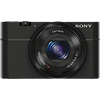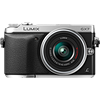Main
Model
Price
Advantages
launch
Announced
Body type
Camera subcategory
Sensor
Effective pixels
Max resolution
Sensor size
Sensor type
Processor
Image ratio w:h
Other resolutions
Sensor photo detectors
Image
ISO
White balance presets
Custom white balance
Image stabilization
Uncompressed format
Boosted ISO (minimum)
JPEG quality levels
Photography features
Minimum shutter speed
Maximum shutter speed
Aperture priority
Shutter priority
Manual exposure mode
Subject / scene modes
Built-in flash
External flash
Flash modes
Continuous drive
Self-timer
Metering modes
Exposure compensation
AE Bracketing
WB Bracketing
Flash range
Screen / viewfinder
Articulated LCD
Screen size
Screen dots
Touch screen
Screen type
Live view
Viewfinder type
Viewfinder coverage
Viewfinder magnification
Viewfinder resolution
Videography features
Resolutions
File Format
Microphone
Speaker
Optics & Focus
Focal length (equiv.)
Optical zoom
Maximum aperture
Autofocus
Digital zoom
Manual focus
Macro focus range
Number of focus points
Lens mount
Focal length multiplier
Physical
Weight (inc. batteries)
Dimensions
Environmentally sealed
Battery
Battery details
Battery Life (CIPA)
Storage
Storage types
Connectivity
USB
HDMI
Wireless
Remote control
Wireless notes
Other features
Orientation sensor
Timelapse recording
GPS
Samples
Videos
Summary
The Cyber-shot DSC-RX100 maximum resolution of 5472 x 3648 pixels (20 megapixels) is better than the Panasonic Lumix DMC-GX7 highest resolution of 4592 x 3448 pixels (16 megapixels). The Panasonic Lumix DMC-GX7 is equipped with larger sensor than the Cyber-shot DSC-RX100: Four Thirds (17.3 x 13 mm) versus 1 (13.2 x 8.8 mm). It is very significant advantage of this model as big sensor allows you to take pictures of the better quality. The Cyber-shot DSC-RX100 has a wider ISO range of 100-25600 in compare with 125-25600 ISO range of the Panasonic Lumix DMC-GX7. Such ISO numbers allow the camera owner to take better pictures in more difficult conditions. The Cyber-shot DSC-RX100 has more number of white balance presets - 9. This option gives you more control over colour. The Cyber-shot DSC-RX100 has image stabilization that will allow the photographer to take clearer pictures indoors without using a tripod. The Cyber-shot DSC-RX100 has more focus points in compare with the Panasonic Lumix DMC-GX7: 25 vs 23. More number of focus points means more convenience when attempting to focus on objects that are not centred.
The Lumix DMC-GX7 has tilting LCD that will allow you to make pictures from any interesting perspective. The Cyber-shot DSC-RX100 display is better as it has more screen dots 1,228,800 in comparison to 1,040,000 dots of the Panasonic Lumix DMC-GX7 display. The higher dot count display is better for reviewing photos on your camera. The Lumix DMC-GX7 is equipped with a touch screen. The Panasonic Lumix DMC-GX7 offers better minimum (60 seconds) and fastest (1/8000 second) shutter speeds.
The Lumix DMC-GX7 supports external flash. It provides superior control over the exposure and lighting of the subject in dim light or in bright light conditions when you need to fill-flash. The Lumix DMC-GX7 is equipped with built-in Wi-Fi that will help you to transfer pictures wirelessly from a digital camera to a computer. The Panasonic Lumix DMC-GX7 battery life is better than the Cyber-shot DSC-RX100 battery life. According to CIPA standards the photographer will be able to capture 350 shots with the Lumix DMC-GX7 and only 330 with the Cyber-shot DSC-RX100. The Cyber-shot DSC-RX100 weighs 240g that is 162g less than the weight of the Lumix DMC-GX7.
The Cyber-shot DSC-RX100 and the Panasonic Lumix DMC-GX7 have the same number of pros though as the Lumix DMC-GX7 has larger sensor that is a really significant advantage then it will be the best buy.


